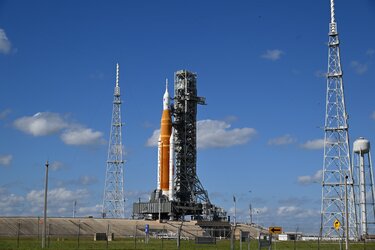
Artemis I crawler timelapse
This timelapse video shows NASA’s mega-Moon rocket with Orion and the European Service Module inside on its crawler at dusk.
While the rocket will propel Orion to supersonic speeds, the rocket itself is moved slowly but securely to the launchpad. These scenes have been sped up on average 20 times faster than actual speeds, with the shots of at the end 50 times faster. Traveling at a maximum speed of just 1.3 km/h, the 6.5-km voyage is a careful process.
At 100 m tall, the SLS rocket is roughly the height of the Elizabeth Tower (Big Ben) in London, UK, or 16 giraffes stacked on top of each other. If you laid the rocket on the ground, it would take over a minute to walk from the engines to the tip of the launch abort system.
At the top of the rocket is the Orion spacecraft including its European Service Module that will be launched to the Moon and back. This mission called Artemis I will not carry a crew but will instead be controlled from the ground.
ESA has designed and is overseeing the development of Orion’s service module, the part of the spacecraft that supplies air, electricity and propulsion. Much like a train engine pulls passenger carriages and supplies power, the European Service Module will take the Orion capsule to its destination and back.






